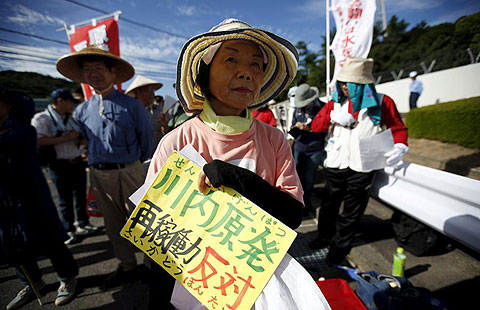

 |
|
A girl sit at a kang bed-stove, a heated bed commonly seen in northern China. |
Air quality has improved dramatically in rich countries over the past century. Yet air pollution is still a huge problem, especially in the developing world. It kills about 7 million people each year, accounting for one out of every eight deaths globally. But the most deadly air pollution comes from inside people's houses, because 2.8 billion people still use firewood, dung and coal for cooking and keeping warm, breathing polluted air inside their homes every day.
To people who don't live under these conditions, it is hard to imagine how polluted the indoor air is. The World Health Organization says outdoor air, for instance, in Beijing, New Delhi and Karachi is several times more polluted that the outdoor air in Berlin, London and Paris. But the typical indoor air in a developing country house with an open fire is many times more polluted than Beijing, New Delhi or Karachi. That is why indoor air pollution kills 4.3 million people each year, making it one of the world's leading causes of death. In China, more than 1 million people die each year from breathing the polluted air inside their homes.
Yet indoor air pollution is rarely among the big issues the world discusses. In 2000, the world made a number of smart, short promises for 2015 called the UN Millennium Development Goals, focusing on poverty, hunger, education and child mortality. They were mostly good promises, but indoor air pollution was missing.
Now, the world's 193 governments are discussing what targets to set for 2030, and there is a bewildering array of 169 proposed targets. While indoor and outdoor air pollution is now part of the targets, so is everything else. And with so many promises we have no priorities.
According to a new study for the Copenhagen Consensus, the simplest solution is to replace inefficient, smoky stoves by more efficient, less smoky ones. Providing 1.4 billion people with such improved stoves would save almost 450,000 lives a year and avoid almost 2.5 billion days of illness annually.
Moreover, more efficient stoves would on average save about 30 percent fuel, which translates into a savings of up to $57 per household per year, and at the same time make cooking more efficient and less time consuming. In total, the health and non-health benefits are estimated at $52 billion per year.













